What is the Executive Branch of Government In The United States of America?
The Executive Branch is one of the parts that make up the three branches of the United States’ government which also includes the legislature and the judiciary. All three branches are at par, with defined roles and functions, providing checks and balances on one another by ensuring a clear separation of powers and preventing the concentration of power and the possibility of any branch appropriating the powers or functions of the other.
What Are the Checks and Balances on the Branches of Government?
The Constitution clearly delineates the functions of each branch of the government: the Legislative arm makes the laws, the Executive enforces the laws, and the Judiciary interprets the law. It also establishes checks and balances to prevent abuse of power by one branch acting without restraint by empowering each branch to limit certain powers of the other.
Checks and balances are often more apparent in the legislative process, For instance,
- The Executive can check the Legislative branch by rejecting or refusing to sign a bill officially proposed to be passed into law. The President’s rejection of the bill is also described as a Presidential veto.
- Congress can override and check the power of the president to veto the bill if the bill gains popular support in the legislature by two-thirds votes of both the House and the Senate, more than a simple majority required to pass a bill that has not been vetoed.
- The judiciary may declare a law passed by the legislature unconstitutional
- The Legislature may propose amendments to overturn the decisions of the Judiciary.
The Executive Branch derives its powers from the Constitution of the United States of America and consists of
- The President
- The Vice President
- Cabinet
- Independent Executive Agencies
What Are The Functions of The Executive Branch?
The Constitution vests the power for enforcement of legislation on the Executive Branch. The Executive has the primary responsibility to implement the legislations made by the Legislative branch by ensuring that the laws are followed and all actions, decisions and other aspects of interactions in the country are in line with those laws. The Executive Branch consists of the political executive which includes the elected and appointed persons, and the non-political executive, public officers in charge of the daily implementation of laws and regulations. The constitutional powers of the Executive branch rest on the office of the President of the United States of America (POTUS), starting with the very first President, George Washington to the current POTUS.
What are the Functions of the President?
The President of the United States of America is an individual, elected into the office of President by citizens of the US who are 18 years or older, and holds power as the head of government as well as being the highest-ranking officer, the commander -in- chief of the Armed Forces, a key part of the US Department of Defense. The President holds office for a maximum of 2 terms, 4 years per term. Although the functions of the President are enumerated in the Constitution, the President may perform functions other than those stated. Some of those functions are inferred from the provisions of the Law, others emanate from the prestige of the office and practices that have evolved over time.
How are Presidents Elected?
US Presidents are elected along with their Vice President by an electoral college. Each elector casts the vote for both the President and the Vice President. The Constitution provides three qualifications a person must have to be eligible as a Presidential candidate. The person must be 35 years old, a natural-born citizen of the United States of America and resident in the US for at least 14 years. As the head of government or Chief of State, the President is the symbol of the American leadership or government and chief representative of the American people. As Commander in Chief, the President has control of American troops and their deployment into combat in line with the Constitution and the War Powers Act.
The President also has the constitutional powers to
- Appoint and remove federal officials such as ambassadors, secretaries of the cabinet, judges of federal courts, judges of the Supreme Court, and other principal officers, subject to the approval by Congress, in some cases.
- Conduct relations with foreign nations, send, receive ambassadors and establish foreign policy by negotiating treaties, creating alliances and signing executive agreements. The President is also responsible for protecting citizens of the United States in other countries and foreigners within the US.
- Legislate powers. Although the President is not a member of the Legislative branch, the power conferred on the office by the constitution allows the President to propose, request or suggest legislation to Congress for enactment. The President may sign or veto a bill passed by Congress- If the President’s veto is not overridden by ⅔ votes of both houses, the bill will fail to become a law. The President traditionally presents a legislative agenda in the State of the Union address, every January except for years in which elections are conducted
- The President may grant a pardon or extend clemencies for federal crimes. The President may pardon someone who has been convicted of a crime against the United States but the pardon does not extend to persons who were convicted for crimes under the criminal statutes of any State.
What Are the Roles of the Vice President?
The Vice President (Veep) is an important executive officer in the US right next to the President. During elections, the VP runs on a joint ticket with the President as running mate, although this was not always the case. Formerly, the Vice President was the person with the second-highest number of Presidential votes, until the passage of the 12th Amendment in 1804 which separates Electoral College votes for the President and Vice President. After Presidential elections, the Vice President tallies and opens the certificate to confirm the electoral college votes.
The most important role of the Vice President is being an immediate successor of the President. Under the 25th Amendment of the US Constitution, the VP has the sole authority to take over the office of the President in the event of the death, physical incapacitation removal by impeachment or resignation of the President. If the majority of the Cabinet and the Veep conclude that the president is no longer fit to discharge the responsibilities of the office, the Veep is required to assume the office, roles responsibilities of the president for the remainder of the President’s unspent term. It is a common saying that the VP is ‘‘a heartbeat away from the Presidency.’’
The Vice President also acts as the formal head of the Upper house of Congress, the Senate, and cast the tie-breaker vote on motions and legislation when the senators are at a time and the Vice President’s vote is required to tilt the balance. The roles and duties of the Vice President that are not formally stated in the constitution are directed or imposed by the President such as:
- Advising the President on State and related matters
- Representing the President on foreign issues and countries
- Making public appearances as the VP or on behalf of the President
- Performing ceremonial duties
What Are The Roles of the Cabinet?
The Cabinet was established in Article II Section 2 of the U.S. Constitution and consists of the Vice President and 15 of the heads of the main executive departments acting as trusted advisors to the President on issues relating to their departments and assisting in the establishment and execution of national and international policies.
The President appoints the 15 principal heads of the executive departments by nominating individuals and presenting their names before the Senate for confirmation or rejection. If approved by the Senate, the heads of department are sworn into office as members of the Cabinet with the title “Secretary” of their respective offices, such as Secretaries of State, Education, Defense, Agriculture, Health, Human Services and so on. The Head of the Justice Department, however, is described as the Attorney General.
Generally, the Cabinet is not given specific roles and responsibilities under the Constitution, they are often perceived to serve at the behest of the President, however, they carry out regulatory and executive duties, expanding the powers of the President by commanding the military forces, enforcing civil rights laws, supervising and directing the activities of the highest percentage of civilian employees under their various departments which expend a large chunk of the national budget. The Secretaries also extend the President’s reach to all the States, as the administrative or functional arm of the executive in the Country. The intangible powers conferred on the President are felt by the general public through the services of the various agencies, headed by the members of the Cabinet. Other individuals who typically participate as members of the Executive and hold cabinet rank include persons designated as:
- US Trade Representative Ambassador
- The administrator of the Environmental Protection Agency
- The White House Chief of staff
- Ambassador for the U.S. Mission to the United Nations
- Chairman of the Council of Economic Advisers
- Director of the Office for Management & Budget
- Administrator for Small Business Administration
The Primary Cabinet members are the Vice President and alphabetically, the Secretaries of
- Agriculture
- Commerce
- Defense
- Education
- Energy
- Interior
- Justice (Attorney General)
- Labor
- Health and Human Services
- Homeland Security
- Housing and Urban Development
- State
- Transportation
- Treasury
- Veterans Affairs
What Does the Secretary Of State Do?
The Secretary of State is one of the highest-ranking members of the Executive Branch, as chief advisor on foreign affairs and administrator of the U.S. Department of States formerly named the Department of Foreign Affairs. The Secretary of State also implements aspects of the President’s functions or roles which pertain to
- Safety and protection of the lives, property, and matters concerning citizens of the United States abroad
- Providing U.S. citizens with information on the relations between the US and foreign nations
- Negotiating, interpreting, canceling Treaties with foreign Countries and keeping Congress informed on such matters.
- Overseeing the implementation of US immigration laws in foreign countries
- Promoting mutually beneficial relations between the US and other nations.
The Secretary of State is the first member of the Cabinet in line for the presidency if the position becomes vacant as a result of the death, removal, resignation, physical incapacitation of the President, and the Vice President is unable for whatever reason to step in the office. Under the Presidential Succession Act of 1947, the Speaker of the House of Representatives is third in line in the event both the office of the President and that of the Vice President is vacant at the same time. If the Speaker is unable to assume office in succession of the President, the President Pro Tempore of the Senate becomes the President. If the President Pro Tempore of the Senate fails to qualify or is unable to succeed the President, the succession shifts to the Cabinet. The Secretary of State is at the top of the list for succession and would become President of the United States subject to the eligibility requirements of the Constitution.
What are the Executive Departments?
Executive departments are cabinet-level departments established by the President to carry out the day-to-day administration of the department operations and also to execute associated laws and policies in the executive branch. The President issues executive orders to provide direction to these agencies on specific matters and also to ensure that they are run in accordance with the federal rules and regulations. As listed above, there are 15 executive departments and each is headed by a secretary appointed by the President and must be approved by a majority vote in the Senate. Although the Constitution did not specifically provide for assistants or advisors to the President, every president since Goerge Washington has had some type of advisory group. The president’s advisors consisted of only four positions in 1789: The secretary of state, secretary of the treasury, secretary of war, and the attorney general. The term President’s cabinet originated from the name Kitchen cabinet given to Andrew Jackson’s advisors because he met with them in the kitchen of the White House. Today, the presidential cabinet includes the veep, White House COS, and secretaries of each cabinet-level department. Each secretary heads an executive department that is designed to serve a specific need of the citizenry and each advises the president on any subject relating to the duty of that department.
What are Boards, Commissions, and Committees?
These are smaller sub-agencies/organizations established by the president or the congress to manage specific tasks and areas that don't fall under the parent agencies. Some present and past examples include;
- Advisory Commission on Electronic Commerce
- Advisory Council on Historic Preservation
- Attorney General’s Commission on Pornography
- The National Commission on Terrorist Attacks Upon the United States (also called the 9/11 Commission).
Just as the President can establish and appoint members to departments, boards, commissions, and committees that focus on special issues, the President also reserves the privilege to remove the head of an executive agency at any time without reason.
What is the Difference Between Executive Departments and Independent Executive Agencies?
Both the Executive Departments and Independent Agencies carry out administrative functions, enforcing, directing and supervising the implementation of laws made by Congress. However, Independent Agencies differ from the Executive Departments in their make-up and the level of influence or control, the President may exercise over them. Independent Executive Agencies are autonomous, typically governed by 5 to 7 member Boards or Commissions. Members are appointed by the President subject to the approval of the Senate. The leadership of independent Agencies consists of persons with expertise in the field of their Agency's operations, and their term in office outlasts that of the President who appoints them. Unlike for members of the Cabinet, removal of the Heads of Independent Agencies is possible on grounds of corruption, unethical practices or inefficiency rather than politics and party affiliations.
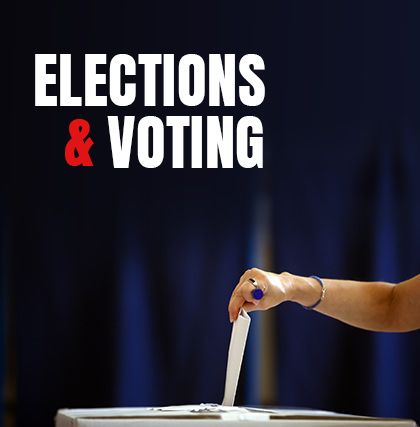 Elections and Voting
Elections and Voting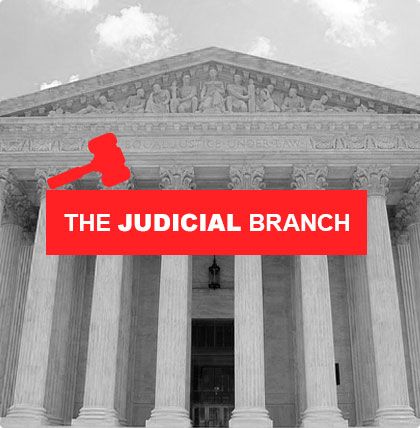 The Judicial Branch
The Judicial Branch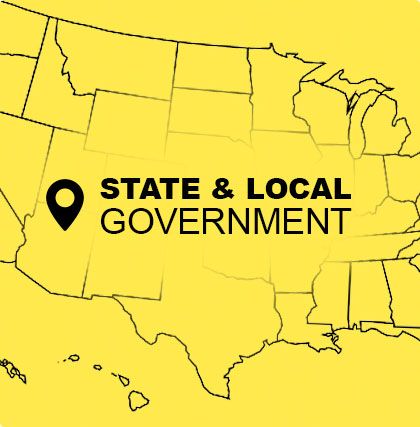 State & Local Government
State & Local Government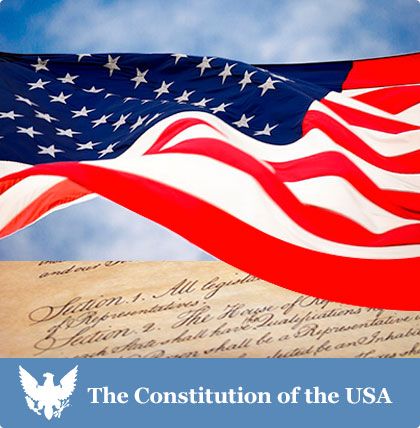 The Constitution
The Constitution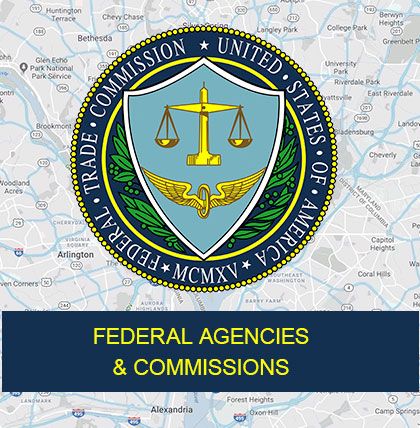 Federal Agencies & Commissions
Federal Agencies & Commissions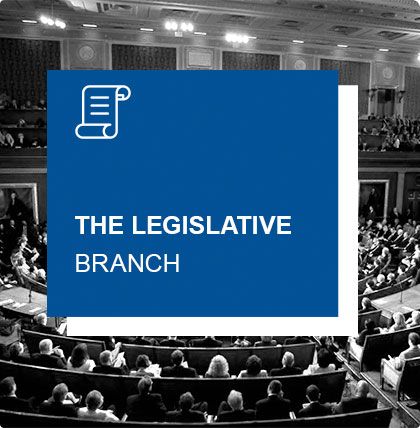 The Legislative Branch
The Legislative Branch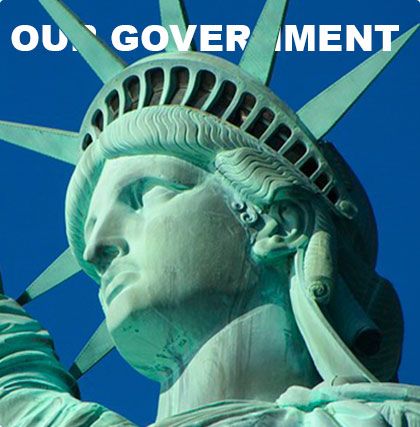 Our Government
Our Government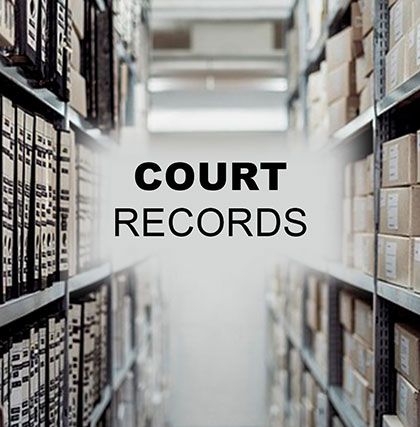 Court Records
Court Records